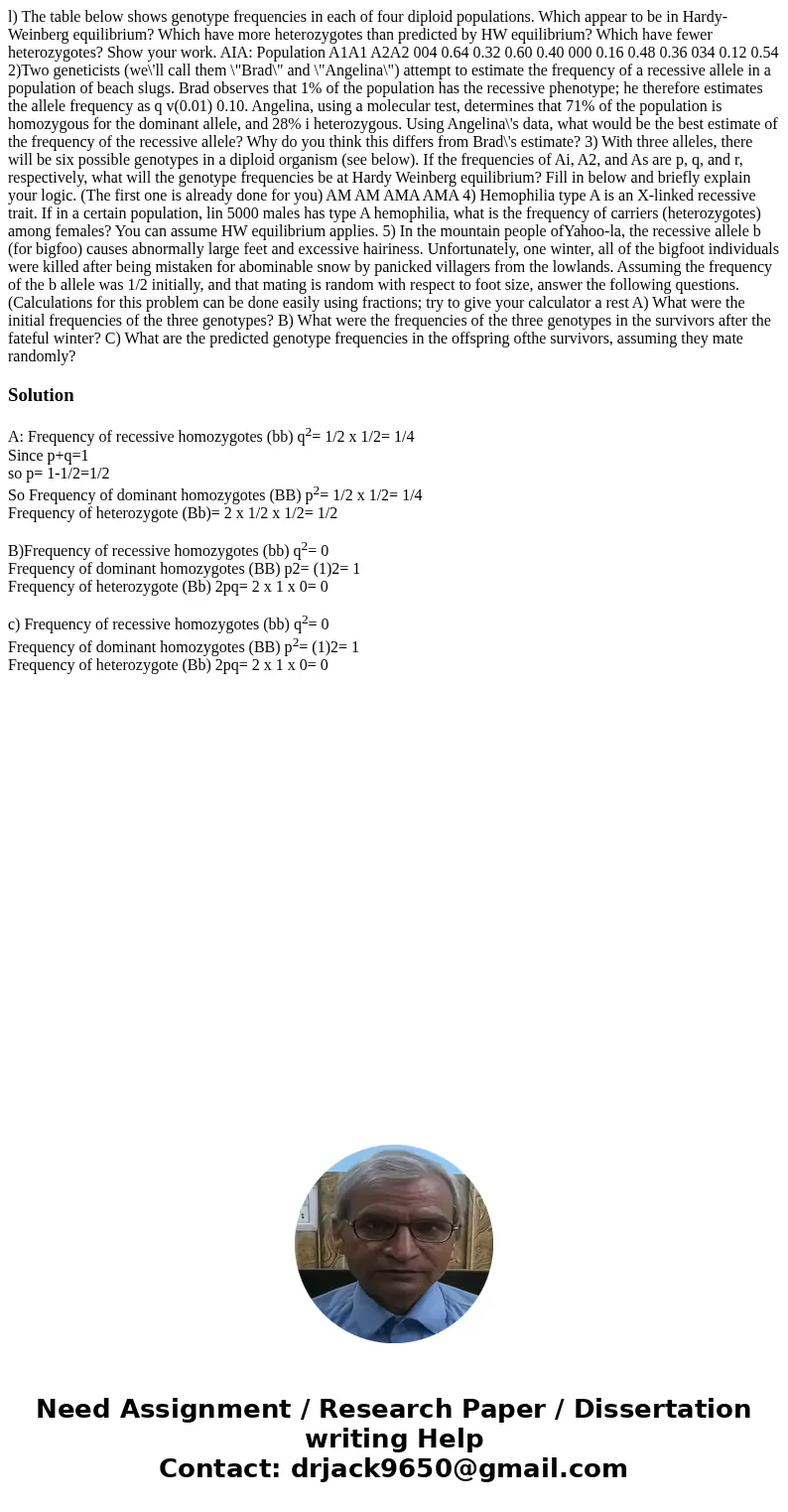l The table below shows genotype frequencies in each of four
l) The table below shows genotype frequencies in each of four diploid populations. Which appear to be in Hardy-Weinberg equilibrium? Which have more heterozygotes than predicted by HW equilibrium? Which have fewer heterozygotes? Show your work. AIA: Population A1A1 A2A2 004 0.64 0.32 0.60 0.40 000 0.16 0.48 0.36 034 0.12 0.54 2)Two geneticists (we\'ll call them \"Brad\" and \"Angelina\") attempt to estimate the frequency of a recessive allele in a population of beach slugs. Brad observes that 1% of the population has the recessive phenotype; he therefore estimates the allele frequency as q v(0.01) 0.10. Angelina, using a molecular test, determines that 71% of the population is homozygous for the dominant allele, and 28% i heterozygous. Using Angelina\'s data, what would be the best estimate of the frequency of the recessive allele? Why do you think this differs from Brad\'s estimate? 3) With three alleles, there will be six possible genotypes in a diploid organism (see below). If the frequencies of Ai, A2, and As are p, q, and r, respectively, what will the genotype frequencies be at Hardy Weinberg equilibrium? Fill in below and briefly explain your logic. (The first one is already done for you) AM AM AMA AMA 4) Hemophilia type A is an X-linked recessive trait. If in a certain population, lin 5000 males has type A hemophilia, what is the frequency of carriers (heterozygotes) among females? You can assume HW equilibrium applies. 5) In the mountain people ofYahoo-la, the recessive allele b (for bigfoo) causes abnormally large feet and excessive hairiness. Unfortunately, one winter, all of the bigfoot individuals were killed after being mistaken for abominable snow by panicked villagers from the lowlands. Assuming the frequency of the b allele was 1/2 initially, and that mating is random with respect to foot size, answer the following questions. (Calculations for this problem can be done easily using fractions; try to give your calculator a rest A) What were the initial frequencies of the three genotypes? B) What were the frequencies of the three genotypes in the survivors after the fateful winter? C) What are the predicted genotype frequencies in the offspring ofthe survivors, assuming they mate randomly? 
Solution
A: Frequency of recessive homozygotes (bb) q2= 1/2 x 1/2= 1/4
Since p+q=1
so p= 1-1/2=1/2
So Frequency of dominant homozygotes (BB) p2= 1/2 x 1/2= 1/4
Frequency of heterozygote (Bb)= 2 x 1/2 x 1/2= 1/2
B)Frequency of recessive homozygotes (bb) q2= 0
Frequency of dominant homozygotes (BB) p2= (1)2= 1
Frequency of heterozygote (Bb) 2pq= 2 x 1 x 0= 0
c) Frequency of recessive homozygotes (bb) q2= 0
Frequency of dominant homozygotes (BB) p2= (1)2= 1
Frequency of heterozygote (Bb) 2pq= 2 x 1 x 0= 0

 Homework Sourse
Homework Sourse